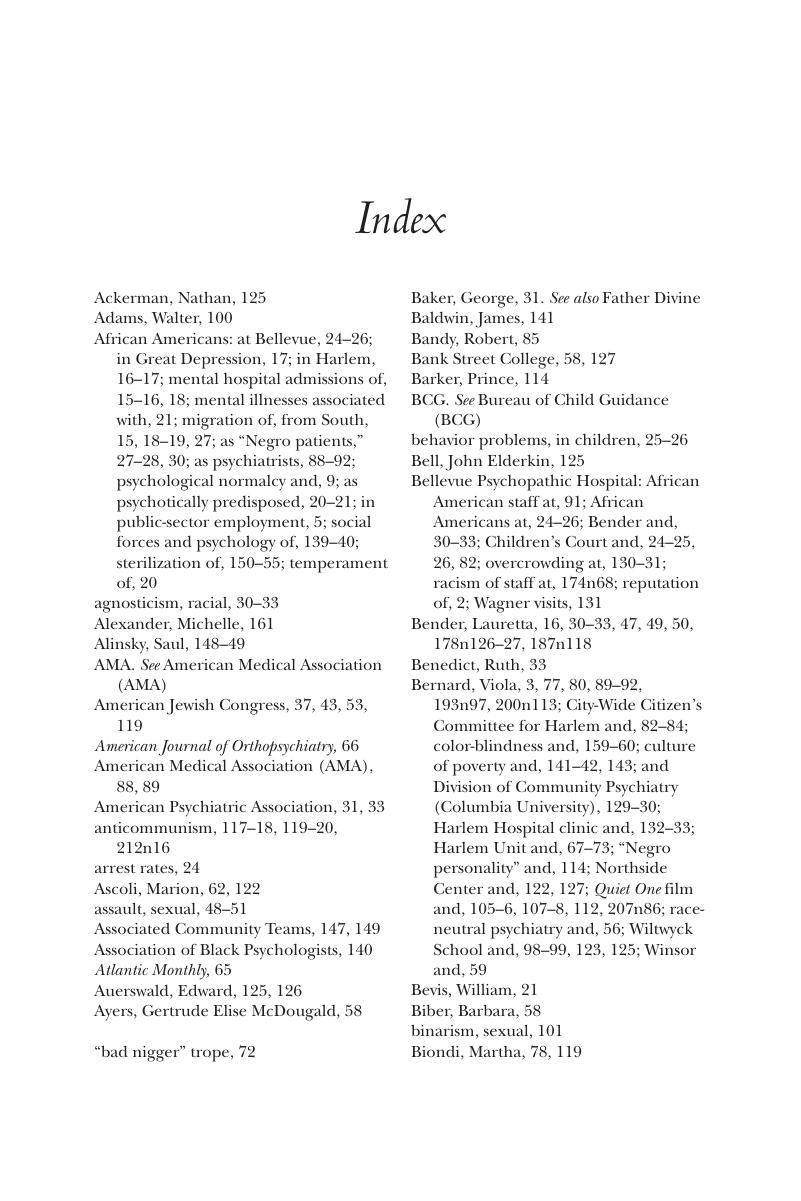Book contents
- Frontmatter
- Contents
- Acknowledgments
- Introduction
- 1 Before Racial Liberalism: Depression-Era Harlem and Psychiatry, 1936
- 2 Everyone's Children: Psychiatry and Racial Liberalism in Justine Wise Polier's Courtroom, 1936–41
- 3 Psychiatry Goes to School: Child Guidance and the Prevention of Juvenile Delinquency, 1940–42
- 4 Psychiatry for Harlem: Wartime Activism and the Black Community's Mental Health Needs, 1942–45
- 5 The Quiet One: Racial Representation in Popular Media and Psychiatric Literature, 1942–53
- 6 Psychiatry Comes to Harlem Hospital: Community Psychiatry, Aftercare, and Columbia University, 1947–62
- 7 The Limits of Racial Liberalism: Harlem Hospital and the Black Community, 1963–68
- Conclusion: Health, Race, and the Color-Blind Legacy of the Long Civil-Rights Era
- Notes
- Bibliography
- Index
- Frontmatter
- Contents
- Acknowledgments
- Introduction
- 1 Before Racial Liberalism: Depression-Era Harlem and Psychiatry, 1936
- 2 Everyone's Children: Psychiatry and Racial Liberalism in Justine Wise Polier's Courtroom, 1936–41
- 3 Psychiatry Goes to School: Child Guidance and the Prevention of Juvenile Delinquency, 1940–42
- 4 Psychiatry for Harlem: Wartime Activism and the Black Community's Mental Health Needs, 1942–45
- 5 The Quiet One: Racial Representation in Popular Media and Psychiatric Literature, 1942–53
- 6 Psychiatry Comes to Harlem Hospital: Community Psychiatry, Aftercare, and Columbia University, 1947–62
- 7 The Limits of Racial Liberalism: Harlem Hospital and the Black Community, 1963–68
- Conclusion: Health, Race, and the Color-Blind Legacy of the Long Civil-Rights Era
- Notes
- Bibliography
- Index
Summary

- Type
- Chapter
- Information
- Psychiatry and Racial Liberalism in Harlem, 1936–1968 , pp. 253 - 260Publisher: Boydell & BrewerPrint publication year: 2016

